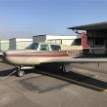-
Posts
153 -
Joined
-
Last visited
The recent visitors block is disabled and is not being shown to other users.

Falcon Man replied to LANCECASPER's topic in General Mooney Talk

Falcon Man replied to 65MooneyPilot's topic in Mooney Safety & Accident Discussion

Falcon Man replied to Dale's topic in Modern Mooney Discussion
We have placed cookies on your device to help make this website better. You can adjust your cookie settings, otherwise we'll assume you're okay to continue.